
Viking Names
Snort
Snǫrtr was originally a byname similar in meaning to Norwegian snerting ‘quick fellow’. It is fairly common as a personal name in Iceland. The genitive singular form of the name, Snartar, is the first element in Snarford, Lincolnshire.
Read More

Viking Names
Bark
The Old Norse male personal name Barkr originated as a byname. The name is related to the Old Norse noun bǫrkr (genitive barkar) ‘bark’. One of the settlers of Iceland bore the form Bǫrkr and the name appears as an element in a few Western Scandinavian place-names. Bark is found as a byname in Sweden. Barki is potentially a side-form of Barkr or could be from barki ‘throat’- also a byname. Barkr is the first element in the place-name Barkby, Leicestershire and this place-name was later affixed to Barkby Thorpe, its daughter settlement.
Read More
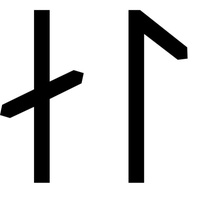
Viking Names
Val
Valr is an original byname meaning ‘hawk, falcon’. Valr is recorded as a male personal name and byname in West Scandinavia and is found in a Swedish runic inscription. Valr is the first element in the place-name Walesby, Nottinghamshire, and a place of the same name in Lincolnshire. Walshcroft Wapentake in Lincolnshire also contains either this name or the Old Norse male name Váli and Old Norse kross, the cross probably marking the location of the Viking Age meeting-place. Cameron suggests that the same man gave his name to Walesby and the wapentake.
Read More
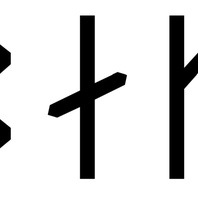
Viking Names
Bak
Bak is an original byname meaning ‘back’ and is not recorded as a given name in Scandinavia. It is the first element in the place-name Baston, Lincolnshire, and is also found as the first element of Baxby, in North Yorkshire.
Read More
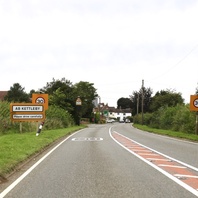
Viking Names
Ab Kettleby
Ab Kettleby, in the Framland Hundred of Leicestershire, comes from the Old Danish male personal name Ketil (Old Norse Ketill), originally a byname related to Old Norse ketill ‘a cauldron, a cauldron-shaped helmet’. This personal name was very common in England. It is compounded with Old Norse by ‘a farmstead, a village’. The affix Ab, which distinguishes the township from Eye Kettleby some four miles to the south, comes from the name of an early owner of the estate, a Middle English Abbe (either from the Old English male personal name Abba or the Old Norse male personal name Abbi).
Read More
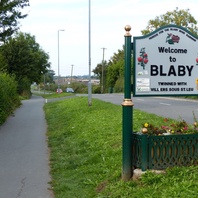
Viking Names
Blaby
Blaby, in the Guthlaxton Hundred of Leicestershire, likely comes from the unrecorded Old Norse male personal name Blár, which appears to be a byname from the Old Norse adjective blár ‘dark’, combined with the Old Norse element by ‘a farmstead, a village’.
Read More
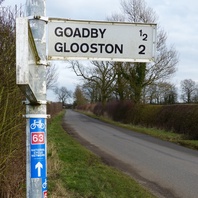
Viking Names
Goadby
The first element of Goadby, in the Gartree Hundred of Leicestershire, comes from the Old Norse male personal name Gauti (genitive singular Gauta), which is either a short form of names in Gaut- or is derived from an original byname meaning ‘a man from Gautland’. The second element of the place-name is Old Norse by ‘a farmstead, a village’. Occasionally the place-name is suffixed with reference to its neighbouring villages Noseley or Keythorpe to distinguish it from Goadby Marwood in the Framland Hundred.
Read More

Viking Names
Bild
The Old Norse male personal name Bíldr is originally a byname meaning ‘blade’. It is the personal name of a fictional character in West Scandinavia and is frequently used as a byname there. A Bildus is mentioned in Saxo and the name appears as a byname in Denmark and may be found in some Danish place-names. Bildr is the first element of the place-name of Bilsthorpe, Nottinghamshire.
Read More
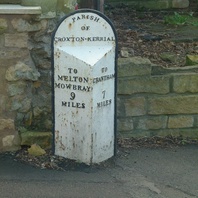
Viking Names
Croxton Kerrial
The first element of Croxton Kerrial, in the Framland Hundred of Leicestershire, likely comes from the Old Danish male personal name Krōk (Old Norse Krókr), originally a byname meaning ‘crooked-back’, possibly ‘crooked-dealer’ related to Old Norse krókr ‘hook’. Alternatively the first element could be Old English crōc ‘a crook’, which relates to a location situated in a nook or bend of land. The second element is Old English tun ‘an enclosure; a farmstead; a village; an estate’. The land was granted to granted to Bertramus de Cryoll in 1239 thus the affix Kerrial. This name can be compared to South Croxton also in Leicestershire.
Read More

Viking Names
Snibston
Snibston, in the West Goscote Hundred of Leicestershire, is a hybrid place-name formed from the Old Norse male personal name Snípr, a byname related to Norwegian snipa ‘a miser, an unsociable person’ and Old English tun ‘farm, settlement’. Snibston became a joint parish with Ravenstone in 1884 when Ravenstone moved from Derbyshire to Leicestershire.
Read More
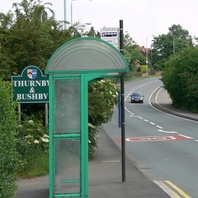
Viking Names
Thurnby
Thurnby, in the Gartree Hundred of Leicestershire, probably derives from Old Norse þyrne, þyrnir, þyrni ‘a thorn-bush’ and Old Norse by ‘a farmstead, a village’. It is also possible that the specific element is the Old Norse byname Þyrnir. However, when taken with the neighbouring parish Bushby these names appear to record an area of former scrubland. This land remained poorly exploited until the period of Scandinavian settlement. Some earlier spellings of the name show substitution of Old English þorn ‘a thorn-tree’ as the first element. Thurnby is now a joint parish with Bushby.
